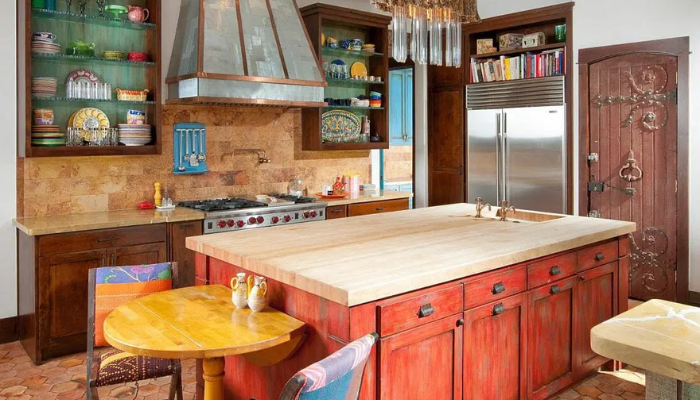The kitchen is the heart of the home, and it should be functional and unique. Creating a functional kitchen that reflects your personal style can be a challenge, but with some careful planning and thoughtful design, you can transform your kitchen into a space that is not only beautiful but also practical.
An outdated or poorly designed kitchen can quickly become a source of frustration rather than joy. If you’re looking to create a functional and unique kitchen, there are several key considerations to remember. In this blog, we will explore some tips and strategies for designing a kitchen that meets your needs and reflects your personal style.
Assess your Needs
The first step in designing a functional and unique kitchen is to assess your needs. What do you use your kitchen for? Do you entertain often? Do you have a large family requiring much storage and prep space? Consider your cooking habits and the types of appliances you use most frequently. Have a list of what you must have and prioritize them in order of importance.
Think About your Layout
The layout of your kitchen is another important consideration. We have a number of kitchen layouts you can choose from, including U-shaped, L-shaped, galley, and open-concept. Each layout has its own advantages and disadvantages, so it’s important to consider your space and needs when selecting a layout.
For example, an open-concept kitchen may be ideal for those who like to entertain and want a space that flows seamlessly into other areas of the home, while a galley kitchen may be better suited to those who value efficiency and want to maximize their workspace.
Consider Storage
Storage is another key consideration when designing a functional and unique kitchen. Think about the types of items you need to store and how much storage space you require. Cabinets, drawers, and pantry space are all important considerations. As you consider storage options, consider top cabinet suppliers to avoid fake products that will not last long. You may also want to consider incorporating built-in storage solutions, such as pull-out shelves or custom cabinetry, to maximize your space and keep your kitchen organized.
Choose your Appliances
Your appliances play a key role in the functionality of your kitchen. When choosing appliances, it’s proper that you consider the kind of meals you prepare regularly and your cooking habits. For example, if you’re an avid baker, you may want to invest in a high-quality oven or stand mixer. Similarly, if you like to entertain, you may want to choose a refrigerator with ample storage space for party platters and drinks. Investing in high-quality appliances is essential for creating a functional kitchen.
Ensure you look for energy-efficient appliances with a range of features that meet your specific needs and are easy to clean and maintain. In addition to functionality, consider the aesthetic appeal of your appliances. If you prefer a cohesive look, consider purchasing appliances from the same brand or with a similar design aesthetic.
Focus on Lighting
Lighting is an often-overlooked aspect of kitchen design, but it can have a big impact on the functionality and ambiance of your space. A well-lit kitchen is not only easier to navigate, but it also creates a warm and inviting atmosphere.
Consider installing various lighting types, including task lighting for food prep areas, ambient lighting for the dining area, and accent lighting for design elements.
You can also incorporate a mix of task lighting, such as under-cabinet lighting or pendant lights over the island, and ambient lighting, such as recessed lighting or a chandelier, to create a warm and inviting atmosphere.
Choose the Right Materials and Finishes
The materials and finishes you choose for your kitchen will impact its aesthetic appeal and functionality. For example, natural stone countertops are durable and heat-resistant, making them ideal for cooking and baking, while stainless steel appliances are easy to clean and maintain.
For your plumbing needs, go for a reliable water piping system manufacturer with tested and reliable materials. Similarly, hardwood flooring may be more durable than tile but may require more upkeep.
Incorporate your Personal Style
Finally, don’t forget to incorporate your personal style into your kitchen design.
Do you prefer a traditional or modern aesthetic? Do you like bright colors or a neutral palette? Take some time to consider your preferences and use them as a guide when selecting materials, finishes, and design elements for your kitchen.
Whether you prefer a modern and minimalist aesthetic or a cozy and traditional look, there are endless options for customizing your kitchen to reflect your personal taste. Consider incorporating unique design elements, such as a bold backsplash or a statement light fixture, to add personality and interest to your space.
Conclusion
Designing a functional and unique kitchen requires careful consideration of your needs, space, and personal style. Following these tips and strategies, you can create a kitchen that meets your needs and reflects your personality and style. Remember, a well-designed kitchen can bring joy.


















Comments